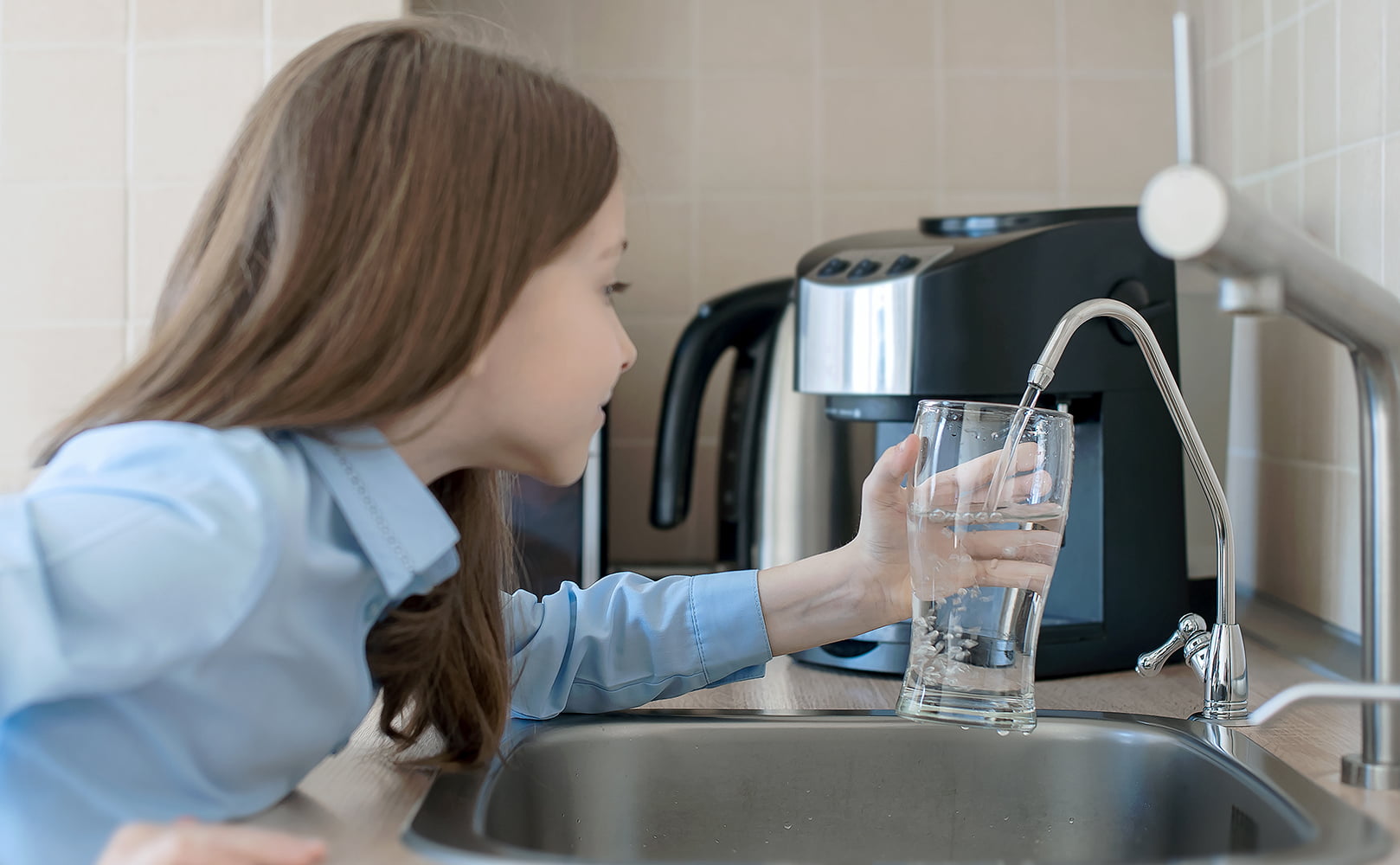Why Is My Reverse Osmosis Faucet Dripping? + How to Fix
Written by: Alexandra Uta // Last Updated: Feb 14, 2023
This page may contain affiliate links. If you buy a product or service through such a link we earn a commission at no extra cost to you. Learn more.
Purchasing a high-quality reverse osmosis system is a major investment, so if it isn’t functioning properly it can be seriously frustrating.
One issue that pops up now and again is dripping from the reverse osmosis faucet. The drip-drip-drip noise can be enough to drive you mad, so fixing this is a priority.
A dripping RO faucet will also waste a significant amount of water if not fixed right away – which equals money down the drain – literally!
Let’s take a look at some of the common causes of a reverse osmosis faucet dripping and how you can fix them.
Key Takeaways
- There are several potential causes of a reverse osmosis faucet dripping, from loose tubing connections to excess water pressure to dirty/broken washers and O-rings.
- Check any tubing connections and make sure they are tight. Use a pressure regulator if feed water pressure to the RO system exceeds 80 psi. Replace any broken components of your RO faucet; dirt must be removed.
- To prevent your RO faucet from dripping in the future be sure to perform all scheduled RO system maintenance and filter replacements on time, check the tubing connections periodically, and ensure the feed water pressure to the system is in the proper range.
Why Is My Reverse Osmosis Faucet Dripping and How Can I Fix It?
There are several reasons your reverse osmosis faucet might be dripping. Let’s break them down one by one.
Before starting any troubleshooting or repairs, be sure to shut off the cold-water supply to the RO system. There should be a cold-water shutoff valve under the sink that must be turned clockwise to stop the water flow.
You will also need to close the storage tank valve.
Finally, open the RO faucet to drain as much of the remaining water as possible.
Loose Connections
Loose connections somewhere in the RO system can lead to a dripping faucet.
The obvious place to look would be the tubing connection under the faucet running to the final post-filter. Take a look at the other tubing connections throughout the system, too, if the problem isn’t the one under the faucet.
Water Pressure
While it might not be the first thing you think of when it comes to a dripping RO faucet, excessive water pressure can damage various components of the system and lead to dripping.
RO systems function best when the feed water pressure is between 40 and 80 psi, both higher and lower than that will lead to problems. If you find that the water pressure in your home is too high, you can purchase and install a pressure regulator to achieve ideal pressure in the system.
Broken or Misplaced Washers
A common cause of a dripping faucet is a broken or out-of-position washer or O-ring. This doesn’t only apply to RO faucets, but to any faucet type.
The washer and O-ring typically rest against the faucet base and damage to one or the other can lead to a dripping faucet. If you’re lucky, then there is just a bit of crud buildup that can be removed by cleaning and repositioning the O-ring.
If the O-ring or washer is broken, you’ll need to order a new one from the manufacturer and replace the missing component.
Tips for Preventing a Dripping RO Faucet in the Future
If you want to avoid this frustrating problem from occurring in the future, there are a few precautions you can take to make sure your reverse osmosis system is functioning optimally.
First off, make sure to perform all of the scheduled maintenance tasks on the RO system. This includes replacing the pre and post-filters as well as the membrane according to the manufacturer’s recommendations. Regular cleaning of the system and storage tank according to the manufacturer’s recommendations is also important.
Secondly, you’ll want to regularly check the status of the tubing connections throughout the system. If anything is loose, replace it and ensure it’s tight.
Lastly, you’ll want to ensure the feed water pressure to the system is within the recommended range. This can be accomplished easily by installing a basic pressure gauge. These will give you an accurate reading of the water pressure at any given time, and let you know if the pressure is too high or low.
In case the pressure is too high or low, you can install a pressure regulator before the first pre-filter – which will keep the pressure at the optimal level.
If you have any questions about how to fix a dripping reverse osmosis faucet please don’t hesitate to leave a comment below!
Information provided on BOS is for educational purposes only. The products and services we review may not be right for your individual circumstances.
We adhere to strict editorial guidelines. Rest assured, the opinions expressed have not been provided, reviewed, or otherwise endorsed by our partners – they are unbiased, independent, and the author’s alone. We fact-check all content for accuracy. It is accurate as of the date posted and to the best of our knowledge.


